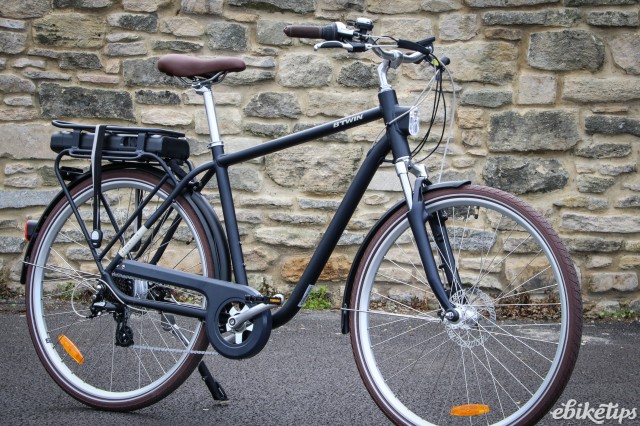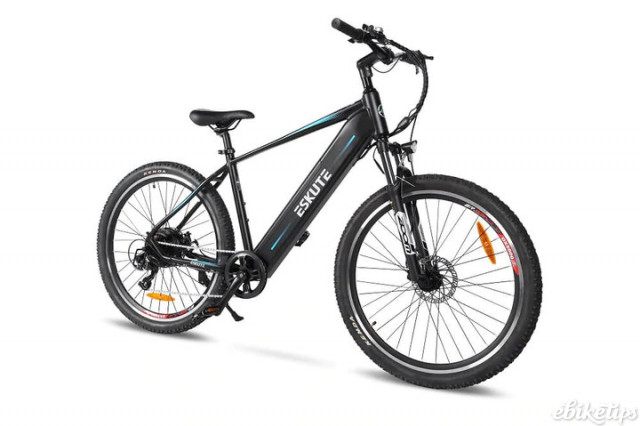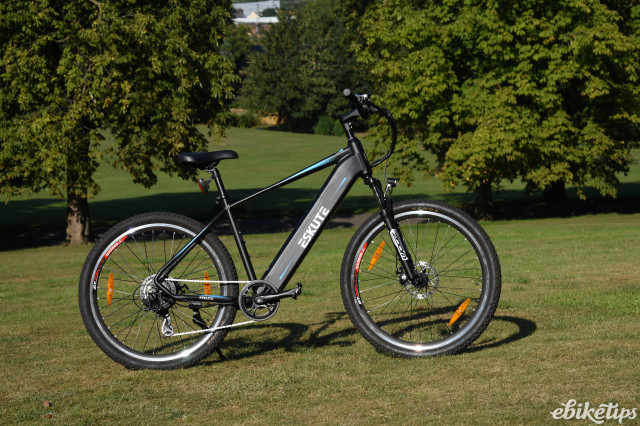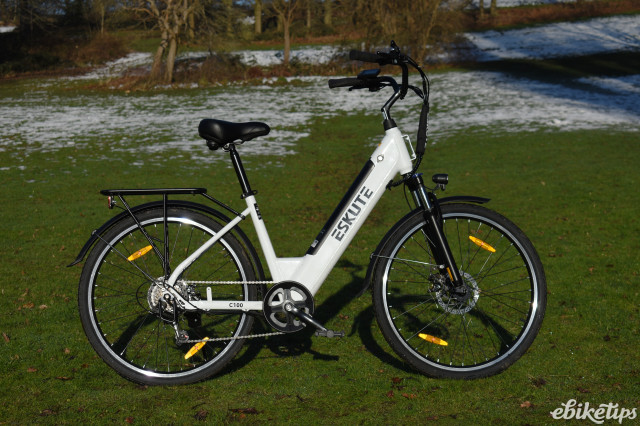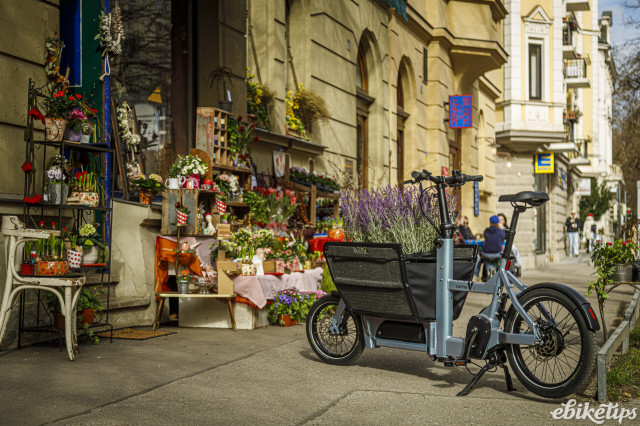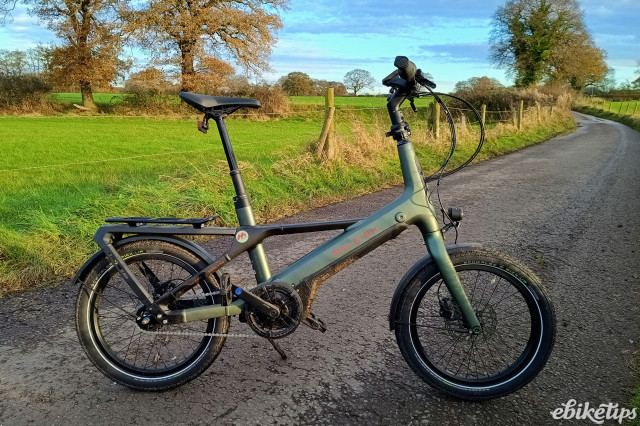As electric bike technology develops, previously more expensive motors and related technology sometimes becomes available at cheaper price points. While you are highly unlikely to find any mid-drive motors below £1,000, you’re more likely to find better quality bikes than previously.
There are, however, going to be some trade-offs at this price, which are likely to be battery size, motor quality or overall bike weight. If you’re wondering what spending a few quid more might get you, take a look at our guide to the best electric bikes under £2,000.
With electric bikes increasing in popularity and manufacturing catching up to the demands with expansion of facilities, there’s now more choice than ever when it comes to bikes under £1,000. This includes brands you'll have heard of, and not just dubious looking things that don’t appear that they’d last more than a few months (although there are certainly plenty of those too).
As cheaper e-bikes typically have smaller batteries, there are lots of folding e-bikes at this price point, so if you’re looking for a cheap commuter e-bike, you’re in the right place.
Best electric bikes under £1,000
- Best folder: Engwe C20 Pro | Buy for £1,199 from Engwe
- Best step-through: Eskute Polluno | Buy for £869 from Eskute
- Best eMTB: Eskute Netuno | Buy for £839 from Eskute
- Best of the rest
- FAQs about e-bikes under £1,000
How we chose
Best folding: Engwe C20 Pro - £1,199
As we said in the introduction, there are compromises to be made when buying an electric bike at this price. However, the Engwe C20 Pro is a great example of maximising the important details whilst focusing less on the ‘luxuries’. For example, the battery range is pretty good for a folder at around 35 - 40 miles, but the bike itself is rather heavy at 25kg.
It is a folder, so even if it’s not ideal for lugging around on public transport, it’s still a compact solution and will stay out of the way in your house or garage. The motor is also pretty smooth, although it does feature a slight delay in the pedal assistance. For the price, its main value comes from that battery range and its physical size - so if those things are important to you, it's a good place to start.
The Engwe C20 Pro was only £949 when we reviewed it in January, but it does seem to have increased in price since then. There is some money off to be had for new customers, but if £1,000 is your absolute budget cap then you might consider a similar bike, like the Fiido D11.
For more detail, read our review of the Engwe C20 Pro.
Best step-through: Eskute Polluno - £869
Eskute’s bikes all tend to fall into the ‘budget’ category, and the Polluno in particular offers great value. We reviewed Eskute’s previous city bike, the Wayfarer (which you can read about below), and the Polluno is basically the revamped version of that. Unfortunately, it looks like the Wayfarer is no longer available, but the Polluno is handily also under £1,000 (for now at least).
It comes with a 522Wh removable battery, which Eskute claim provides a range of up to 65 miles. The hub motor is a Bafang rear hub model and provides maximum torque of 32Nm. It only comes in one size, which is a theme across Eskute’s range of e-bikes, although the brand does claim the bike will fit riders between 5’2” and 6’2”.
For more detail, read our review of the Eskute Wayfarer.
Best eMTB: Eskute Netuno - £839
It’s worth bearing in mind we’re using the term ‘mountain bike’ quite loosely here – we wouldn’t recommend trying to tackle anything particularly technical on this. That said, if you only want something that’s going to be able to handle a canal towpath or similar, then the Eskute Netuno is decent value for money.
The Netuno is the successor to the Voyager that we also reviewed, and comes with lights and an extra 42Wh of battery capacity. The attachment points also make this an attractive commuter option if you don’t want to take it too far off-road. Like the other Eskutes, it does only come in one size and is maybe best left to the taller riders.
For more detail, read our review of the Eskute Netuno.
Best of the rest
Fiido D11 - £892
It may be 19kg and thus not perhaps the most easily transportable on trains or buses, but the Fiido D11 is one of many value e-bikes from the Chinese firm. Our reviewer said the D11 felt more premium than some other models. It has a nicely designed single beam frame along with 20” wheels.
The bike folds at the middle of the frame, and to make it slightly more bearable than lugging 19kg around, the seatpost battery is removable, dropping the weight down to a far more manageable 13.5kg. The rear hub motor isn’t massively powerful, but does the job on flatter terrain.
For more detail, read our review of the Fiido D11.
B’Twin Elops 900e - £1,099
OK, it’s technically a little bit over £1,000 – but it’s worth mentioning as it's often on offer for less. The B’Twin Elops 900e is a rather stylish looking city bike, and it’s reasonably priced for the spec. It’s available in a diamond frame (as above) or as a step-through, so it’s accessible to a wider audience. If the price is a big issue, however, maybe consider another of Decathlon's e-bikes, the Riverside Original 920 E Electric Hybrid Bike, which costs just £700 at the time of writing, and boasts a full-suspension frame.
Decathlon suggests a range of up to 70km, which for many would equate to at least a few days’ worth of commuting or errand running. A seven-speed drivetrain helps to make inclines a little less intimidating, although the motor could be slightly better to help riders cope with hilly terrain.
For more detail, read our review of the B'Twin Elops 900e.
FAQs about electric bikes under £1,000
What kind of frame will an e-bike under £1,000 have?
At this tight of a budget you won’t have as much choice when it comes to frame type. There are unlikely to be any sporty mountain bikes, for example. Instead, you’ll find a lot of city bikes and folding bikes. Folding bikes are great for multi-modal commutes or for those who have less storage space, while city bikes are also great for commuting as well as running errands around town in a more relaxed riding position.
Alloy frames are the order of the day, but cheaper e-bikes (and their components) will tend to be heavier than more luxurious models. An electric hybrid or e-mountain bike will most likely weigh considerably more than 20kg, which is something to consider if you might have to carry your bike in and out of the house/wherever you store it regularly.
Is an electric bike worth buying?
Absolutely! Although which bike you buy will depend on what you will be using it for. A cheap electric bike like the ones listed above can be good starting points for those on a very tight budget.
If you want something a bit more reliable and more premium, there’s plenty of options to choose from – have a read of our overall guide to the best electric bikes to see what's available across other categories and budgets.
Which company is best for buying an electric bike?
This depends on what bike you’re buying. If you are purchasing a direct to consumer bike from a brand like Canyon, then you can only buy from them directly. If you are buying an e-bike that is distributed through shops and online retailers, then it’s best to buy from somewhere reputable where you can go back if you have any problems.
This is why so many people advocate for their local bike shops. You may not be able to get the best deal on price, but for a little extra you get local customer service and often a discount on the first service for your bike.
What kind of brakes are on e-bikes under £1,000?
For maximum stopping power, hydraulic disc brakes are the golden ticket nowadays and are almost guaranteed to feature on any e-mountain bike or hybrid costing over £2,000. In our price bracket, you're going to have to compromise. Some even feature V-brakes. These are less hassle to adjust than a cantilever, and a cheaper option than all-in-one caliper rim brakes.
Mechanical disc brakes feature on numerous e-mountain bikes and hybrids in Decathlon's B'Twin and Rockrider ranges and also on the Carrera Subway E and Crossroad E, but on super budget e-bikes you're mostly going to get rim braking. They're perfectly fine for most types of riding and have been the brake type of choice for years up until recently; they're just not as powerful as disc brakes which can be noticeable on a heavier bike.
What type of motor is most common on cheaper e-bikes?
On e-bikes under £1,000, you're all but guaranteed to find the motor in either the rear or front hub (usually the rear). Mid-motors are pricier, starting on e-bikes from around £1,500 up. The maximum sized motor you're going to get is 250W of continuous power that cuts out at 25km/h, regardless of how expensive your bike is. The motor might not feed your assistance in quite so smoothly as on more expensive variations when you pedal, but you're still technically getting the same average amount of assistance as you would get on e-bikes that cost ten times as much. Cheaper motors may however perform less well up steeper hills, which is something to bear in mind.
How much battery range can I expect on an e-bike under £1,000?
With pricier e-bikes lasting up to 100km before needing to be charged nowadays, you're looking at around half of that on e-bikes at this price point. For example, a 310Wh battery will give you about two to three hours of riding at medium levels of assistance; although bear in mind for road and city riding you won't need the assistance so much, so you may get quite a bit more out of it. On the trails you're going to be using that assistance a lot more, so bigger batteries are desirable.
Can I expect many included accessories on an e-bike under £1,000?
Some higher end e-bikes are equipped with built-in lights, fancy displays and storage options, but if you're spending £1k you're probably not going to get as many extras, if any. Some of our suggested buys do include racks, mudguards and lights, but they’re more of an exception than the rule.
How we review e-bikes
A lot of work goes into testing e-bikes thoroughly. Our reviewers ride each bike for at least a month before writing up their findings and coming up with final verdicts.
Every bike we review is assessed thoroughly based on its suitability for the intended discipline and riding style. A lot of focus is of course on the motor and battery, but we pay attention to all the component choices from wheels and tyres to the drivetrain and finishing kit.
We also compare the bike to its main rivals - if there is a similar bike with better spec and a lower price, we'll take this into account.
Why you can trust us
E-bikes recommended in ebiketips' buyer's guides will almost always be those we've reviewed in full, or which are rated highly by multiple members of the team.
We've reviewed literally hundreds of e-bikes over the years, and the bikes you'll find in this guide will all have scored 7/10 or more to have been considered for inclusion. Whatever the brand, whatever the marketing claims, if the bike hasn't performed, it isn't listed here.
All of our reviewers and buyer's guide writers are experienced e-bikers. You can therefore be sure we've carefully considered our selections, while the advice you'll find below is based on our real-world experience.
If you're new to e-bikes, you might want to take a look at our beginner's guide to buying an e-bike. Our overall guide to the best electric bikes may also be of interest if you're not yet quite sure what type of electric bike you're after.
